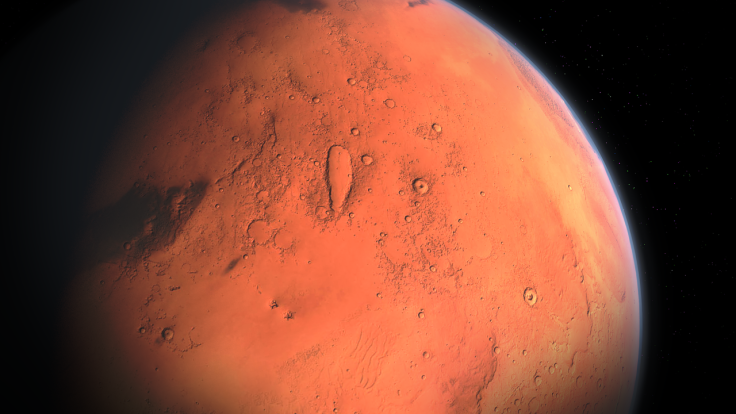UAE's Mars Mission Sheds Light On Deimos' Geological History
KEY POINTS
- New photographs of Mars' moon Deimos were released on Monday
- The UAE Mars Mission was able to reach up to 100 kilometers from Deimos' surface
- New findings show that the moon was not a captured asteroid but a rock that came from Mars itself
The UAE's Mars mission has uncovered new details about Deimos, one of Planet Mars' two moons. Findings suggest that the moon may not be a captured asteroid but a rock that came from Mars itself, challenging a long-standing theory that the planet's moons, Deimos and Phobos, are space rocks or asteroids trapped in its orbit.
"We are unsure of the origins of both Phobos and Deimos," said the probe's science lead Hessa Al Matroushi. "How exactly they came to be in their current orbits is also an active area of study, and so any new information we can gain on the two moons, especially the more rarely observed Deimos, has the potential to unlock new understanding of Mars's satellites."
"Our close observations of Deimos so far point to a planetary origin rather than reflecting the composition of a type D asteroid as has been postulated," she added.
Previous missions conducted on the Red Planet established that the surface of Deimos was much smoother than that of Phobos. It also has an odd shape. With the UAE's probe, scientists were able to reach up to 100 kilometers from the surface of Deimos, the closest any mission has ever been to the celestial body.
في سابقة عالمية جديدة … مشروع الإمارات لاستكشاف المريخ "مسبار الأمل" يقترب لمسافة ١٠٠ كم من القمر التابع للمريخ "ديموس" .. ويلتقط أوضح صورة حصل عليها البشر لهذا القمر …
— HH Sheikh Mohammed (@HHShkMohd) April 24, 2023
تخبرنا النظريات بأن هذا القمر هو كويكب خارجي تم التقاطه ضمن مدار المريخ .. ويدحض مسبار الأمل هذه النظرية… pic.twitter.com/JDOy1fpn6B
"Mapping it using other wavelengths and instrumentation makes this significant from a science perspective. So, it's not only a beautiful image and the far side captured, but a bit of insight into the makeup of the moon itself as well," said Minister of State for Public Education and Future Technology Sarah Al Amiri.
The UAE mission's deputy science head, Justin Deighan, said recent findings shed light on the geological history of Deimos as they provide more insight into the moon's composition. "We have a unique opportunity with Hope to characterize the composition, thermophysics, and detailed geomorphology of Deimos with these new observations," he said.
"We expect to build a better understanding of both Phobos and Deimos' origins and evolution and advance our fundamental understanding of these two satellites of Mars," he added.
The UAE Space Agency released on Monday the most detailed photographs of Deimos, showing never-seen-before details of the moon. UAE Vice President and Prime Minister Sheikh Mohammed bin Rashid Al Maktoum took to Twitter on Monday to share the images, writing, "Proud of our young scientists. Proud of our science. Proud of our contribution to the march of human knowledge."

© Copyright 2023 IBTimes AE. All rights reserved.






















